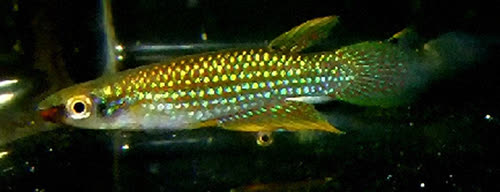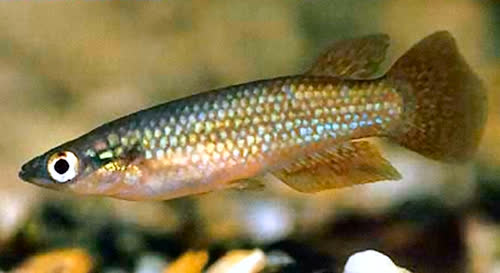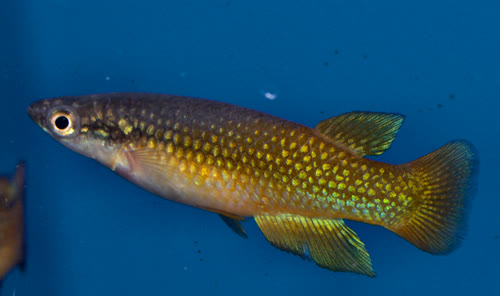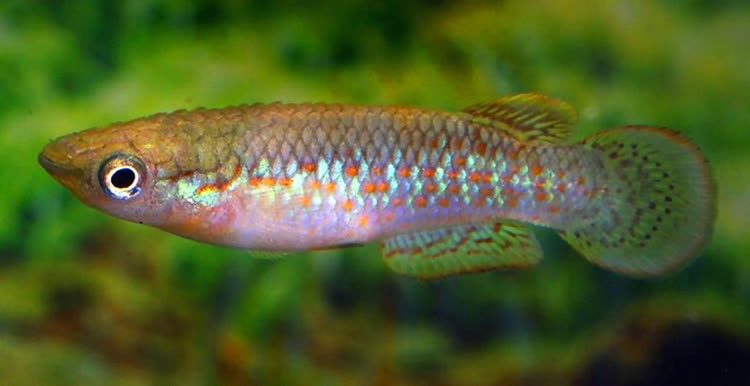
"The most primative of all killies they are in every sense of the word living fossils". - Paul Loiselle
Distribution in Madagascar
P. playfairi is from the Seychelles Islands which are just north of Madagascar the other species are all endemic to Madagascar.
Madagascar is a fragment of the southern tip of the ancient super-continent Gondwanaland that split off from continental Africa about 120 million years ago, India split off from this fragment 65 million years ago.
Completely isolated from all other life evolution slowed down as there were far fewer things to adapt to. The Pachypanchax that were in India where were the same as the ones in Madagascar before the split began changing in their new surroundings and became Aplocheilus while Pachypanchax still in Madagascar didn't really change.
The geography of Madagascar is fairly simple, it's a thousand miles long and there's mountains in the middle. The east coast is a permanent rain forest because of the moisture laden air blowing from  the Indian Ocean. Bedotia are found here. The west cost is dry and sandy. Pachypanchax live here except for the one location where one species lives on the other coast.
the Indian Ocean. Bedotia are found here. The west cost is dry and sandy. Pachypanchax live here except for the one location where one species lives on the other coast.
Madagascar is home to the Tenerec, the insectivore that is the smallest mammal known and the most primitive of primates: the lemurs.
Or as Loiselle refers to them: "tree poodles".
I have a problem with the Lemurs, not that I do not like the Lemur, in fact I've never met a Lemur I didn't like, they're very amiable animals. But, mention you work in conservation in Madagascar and the first thing anybody says is "we have to save the Lemur". Well let me tell you something. Every Lemur known to science in 1900 is with us today and that is not true of the fish of Madagascar."
- Paul Loiselle
Two species of Pachypanchax seem to have gone extinct in the same time frame as have other Malagasy fish.
| Aplocheilus | Pachypanchax |
|---|
| Upper Jaw: | mobile | immobile |
| Haemal Arches: | expanded | unexpanded |
| Hypural Bones: | not fused | fused |
| Caudal: | ovoid | rounded |
| Caudal Median Rays: | prolonged | not prolonged |
| Caudal Base: | unscaled | 1/3 - 3/4 scaled |
| Pineal Spot: | present | absent |
|
Aplocheilus



Photos roughly 5:2
|
Pachypanchax



Photos roughly 5:3
|
| Aplocheilus are just narrow Pachypanchax |
"Myers (1933) based the genus Pachypanchax upon four diagnostic characters: (1) limited
mobility of the maxilla, resulting from its attachment posteriorly by the skin to the
postorbital region of the skull; (2) presence of unexpanded haemal arches; and (3) a
rounded caudal fin whose (4) basal half is heavily scaled, the scales in straight rows, one
scale wide, each series covering the interspace between two caudal rays. Myers placed
particular emphasis on the caudal squamation of Pachypanchax, which he found to be
unique among Old World aplocheilid cyprinodonts examined by him, and matched only by
that of the Neotropical genus Austrofundulus."
Loiselle 2006
Thus Austrofundulus is another missing link, it has not yet evolved any further with regard to caudal scalation any more
than the Pachypanchax it evolved from.
Map from
From Loiselle 2006 -
"
A review of the Malagasy Pachypanchax
(Teleostei: Cyprinodontiformes, Aplocheilidae),
with descriptions of four new species by Paul V. Loiselle
This shows the breakup of the Gondwanaland super-continent and the origin of Madagascar, India and the Seychelles where
P. playfairi is the sole freshwater fish.
150 million years ago a piece the the Antarctic continenal mass split off.

120 million years ago it had totally separated from Antarctica.

105 mya and Africa and the Indian subcontinent moved north.

90 MYA was a big time for killies. By now the Indian subcontinent was at the equator. We believe the greatest amont of divestidicauton began about 80-90 mya. This is when modern killifish began to emerge. India and Magagascar split.

65 MYA ago. Magagascar and the Seychelles split.

50 MYA

Present day


 the Indian Ocean. Bedotia are found here. The west cost is dry and sandy. Pachypanchax live here except for the one location where one species lives on the other coast.
the Indian Ocean. Bedotia are found here. The west cost is dry and sandy. Pachypanchax live here except for the one location where one species lives on the other coast.












